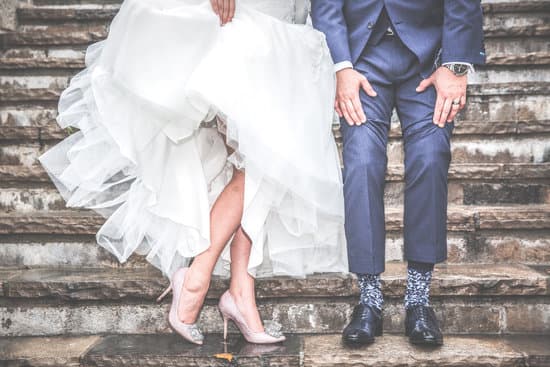Are you unsure of how to address wedding invitations for plus one guests? Properly addressing wedding invitations is an important step in ensuring that all guests feel welcome and included on your special day. This article will provide you with the essential guidelines and etiquette for addressing wedding invitations, specifically focusing on how to include plus ones for your unmarried or unattached guests.
Understanding the proper etiquette for addressing wedding invitations is essential to ensure that all guests feel valued and respected. It is common for couples to have questions about who should receive a plus one and how to address the invitation when extending this courtesy. This guide will explore traditional and modern approaches to addressing invitations, as well as tips for handling unknown plus ones and creative solutions for indicating a plus one on the invitation.
Whether you’re planning a formal affair or a more casual event, the way you address your wedding invitations can set the tone for your celebration. By following proper etiquette and making thoughtful decisions when it comes to including plus ones, you can ensure that all of your guests feel honored and excited to join in celebrating your love. Let’s delve into the details of properly addressing wedding invitations for plus one guests.
Understanding Plus One Etiquette
Addressing wedding invitations for plus one guests can be a bit of a tricky task, but it’s an important aspect of wedding planning to get right. Understanding plus one etiquette is crucial in ensuring that your guests feel valued and respected. When it comes to who gets a plus one and who doesn’t, there are certain guidelines to consider.
First and foremost, married couples should always receive a joint invitation with both of their names on it. Similarly, families should be addressed as a unit, with the parents’ names listed along with the children’s names if they are invited. As for unmarried guests, the decision of whether or not to extend a plus one is typically based on their relationship status and the formality of the event.
When addressing invitations for unmarried guests, use discretion in determining who qualifies for a plus one. Long-term or serious relationships usually warrant extending a plus one invitation, while casual or new relationships may not. It’s important to be thoughtful and considerate when making these decisions, as it can impact how your guests feel about attending your special day.
| Wedding Invitation Etiquette | Understanding Plus One Guidelines |
|---|---|
| Married couples and families should receive joint invitations | The decision to give unmarried guests a plus one depends on relationship status |
| Be considerate and thoughtful when deciding who receives a plus one | Casual or new relationships may not necessarily warrant a plus one invitation |
The Traditional Approach
Addressing wedding invitations for couples and families is an important aspect of wedding etiquette. Properly addressing invitations shows respect to the invited guests and sets the tone for the event. Here are some traditional approaches to addressing invitations for couples and families:
- For Married Couples: When addressing a married couple, it is customary to address the envelope to “Mr. and Mrs. John Smith.”
- For Unmarried Couples Living Together: If the couple is unmarried but living together, both names should be included on the envelope, such as “Ms. Jane Doe and Mr. John Smith.”
- For Families with Children: When inviting a whole family, address the invitation to “The Smith Family” or “Mr. and Mrs. John Smith and Family.”
It is important to use proper titles when addressing invitations, such as Mr. Mrs. Ms. or Dr. if applicable. This shows consideration for the individual’s personal preferences and social status.
When sending out invitations for couples or families with children, it’s essential to ensure that each member feels recognized and included in the invite. This attention to detail can make a significant impact on how guests perceive the thoughtfulness of the wedding hosts.
Remember, while these traditional approaches are commonly used, every situation is unique, and it’s essential to consider each guest’s individual circumstances when addressing their invitation.
Here are a few additional tips on how you can respectfully address wedding invitations for plus one guests:
- If you know the name of your guest’s plus one: Address both individuals by name on the invitation.
- If you do not know your guest’s plus one: Add “and Guest” after your recipient’s name on the invitation.
- If you are unsure about whether your single friend should have a plus one: Reach out directly to your friend and clarify their invitation needs.
By following these traditional guidelines and considering individual circumstances, you can ensure that all of your invited guests feel valued and respected as part of your special day.
Modern Alternatives
When it comes to addressing wedding invitations for unmarried guests with a plus one, there are modern alternatives that take into account the evolving nature of relationships and living arrangements. Whether your guest is in a serious relationship, cohabiting with a partner, or simply wants to bring a friend as their plus one, there are polite and thoughtful ways to address their invitation.
Using “And Guest”
One simple and traditional approach to indicate that an unmarried guest has the option of bringing a plus one is by including “and Guest” after their name on the envelope. For example, the invitation would be addressed to “John Smith and Guest.” This makes it clear that John is invited to bring someone along with him. It’s a straightforward way of offering a plus one without needing specific information about the guest’s relationship status.
Addressing Invitations to Unmarried Couples
If your unmarried guest is in a committed relationship and you know the name of their partner, etiquette dictates that you should address the invitation to both individuals. You can use “Mr. John Doe and Ms. Jane Smith” on the envelope or opt for a less formal approach such as “John Doe and Jane Smith.” This shows respect for the couple’s relationship and acknowledges their partnership while also extending an invitation to both individuals.
Creating Inclusive Language
In today’s diverse society, it’s important to use inclusive language on wedding invitations. Instead of assuming that everyone will have a traditional plus one, consider using wording like “You are invited with a guest of your choosing” or “We welcome you and a companion.” This allows guests to interpret the invitation based on their personal circumstances and brings awareness to different types of relationships and living arrangements.
Tips for Handling Unknown Plus Ones
When it comes to addressing wedding invitations for plus one guests, there may be instances where you simply do not know the name of the guest’s plus one. This can present a bit of a dilemma, but there are ways to handle this situation with grace and tact. Here are some tips for handling unknown plus ones on wedding invitations.
Use “And Guest” or “Plus One”
While this may seem impersonal, it effectively communicates that the invited guest is allowed to bring a date without knowing their name.
Reach Out for Their Name
If you have some contact information for the invited guest, consider reaching out to ask for the name of their plus one. This can be done discreetly and politely, ensuring that you can properly address their invitation. Some guests may appreciate the effort in making sure their plus one feels included in the wedding invitation.
Get Creative With Your Addressing
If using “and Guest” or “Plus One” feels too impersonal for your taste, get creative with how you address the invitation. You could use fun and light-hearted language such as “Bring your favorite person” or “You +1 are invited.” This adds a personal touch and shows that even though you might not know their plus one’s name, they are still welcome at your special day.
Dealing with unknown plus ones on wedding invitations may feel like a challenge, but by using these tips, you can ensure that all guests feel welcome and included in your celebration.
Creative Solutions
When it comes to addressing wedding invitations for plus one guests, there are unique and creative ways to indicate the presence of a plus one on the invitation. One option is to address the invitation specifically to the invited guest and include “and Guest” on the envelope. This makes it clear that the recipient is allowed to bring a plus one without needing to explicitly state their name.
Another creative solution is to use playful or informal language on the invitation, such as “Jane Smith +1” or “You + Guest.” This can add a personal touch to the invitation while still conveying the message that a plus one is welcome. Additionally, using a lighthearted and casual tone can make guests feel more comfortable about bringing a plus one.
Furthermore, incorporating visual elements into the design of the invitation can be an effective way to indicate a plus one. For example, including an image of two entwined hearts or using symbols like a “plus” sign can subtly convey that the guest is welcome to bring a companion. These creative solutions not only communicate information but also add an element of fun and excitement to the invitation.
| Creative Solutions | Indication |
|---|---|
| “and Guest” on envelope | Clear indication of plus one |
| Playful language like “You + Guest” | Adds personal touch |
| Visual elements e.g. entwined hearts | Subtle hint at bringing a companion |
RSVP Etiquette
When it comes to wedding invitations, properly addressing them is crucial to ensuring that your guests feel welcomed and included. This is especially important when it comes to addressing invitations for plus one guests. One key aspect of this process is clearly communicating the plus one option on the response card, as this can help avoid any confusion or misunderstandings.
To effectively communicate the plus one option on the response card, consider using the following tips:
- Clearly indicate the number of guests invited: On the response card, make sure to specify how many guests are invited in addition to the primary invitee. You can do this by including a line that says “We have reserved ___ seats in your honor” and then leave space for the guest to fill in the number of attendees.
- Include a separate line for the plus one’s name: If you are aware of the name of your guest’s plus one, consider including a separate line on the response card where they can write in their guest’s name. This helps ensure that you have accurate information for seating arrangements and other logistical considerations.
- Provide clear instructions: In order to avoid any confusion, provide clear instructions on the response card regarding how to indicate whether or not they will be bringing a plus one. This could include simple options like “Please indicate number of guests attending” with checkboxes for “1” or “2”, for example.
By following these tips, you can effectively communicate the plus one option on your wedding invitation response cards, making it easier for your guests to understand and respond accordingly.
Remember that proper communication is key when it comes to addressing wedding invitations for plus ones. It helps avoid misunderstandings and ensures that all guests feel welcomed and included in your special day.
Conclusion
Addressing wedding invitations for plus one guests is an important aspect of wedding planning that can often be overlooked. Properly addressing invitations not only shows respect for your guests, but it also helps avoid any confusion or discomfort. Understanding plus one etiquette, whether it’s for couples, unmarried guests, or unknown plus ones, is crucial in ensuring that everyone feels included and valued at your special day.
The traditional approach to addressing invitations for couples and families is a classic and respectful way to show consideration for your guests’ relationships. However, with the modern alternatives available, it’s also important to accommodate unmarried guests who are given a plus one. Whether using “and Guest” or adding their name on the invitation, there are creative solutions to make everyone feel welcome.
When dealing with unknown plus ones, it’s essential to handle the situation with sensitivity and tact. Providing a clear method for them to indicate their guest’s name on the response card can help alleviate any awkwardness and ensure that you are able to properly accommodate all attendees. Overall, understanding plus one etiquette and effectively communicating the option on the response card will help make the process smoother for both you and your guests.
In conclusion, addressing wedding invitations for plus one guests should not be overlooked when planning your special day. By following proper etiquette and considering various scenarios such as unmarried guests or unknown plus ones, you can ensure that everyone feels valued and included. Properly addressing wedding invitations is not only a sign of respect but also contributes to creating a welcoming and inclusive atmosphere for all attendees.
Frequently Asked Questions
How Do You Address Plus One on Wedding Invitation?
When addressing a plus one on a wedding invitation, it’s important to clearly indicate that the invite is extended to the primary guest as well as their chosen plus one. This can be done by including “and Guest” after the recipient’s name on the envelope.
How Do You Address a Wedding Invitation With Guest One Envelope?
When addressing a wedding invitation with a guest on one envelope, it’s customary to address it to the primary guest and then include the words “and Guest” in the same line. This signals that the invitation is extended to both individuals.
How Do You Invite Someone to a Plus One Party?
To invite someone to a plus one party, it’s important to communicate clearly that they are welcome to bring a guest. This can be done by addressing the invitation directly to them and then including “plus one” or “you and a guest” on the invitation itself, indicating their ability to bring someone with them.

I have been involved in marriages for over 20 years helping couples and singles understand more about them.





